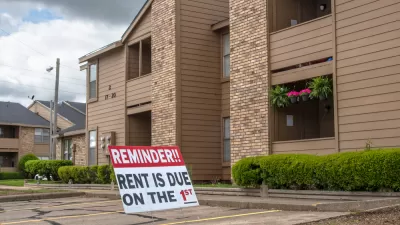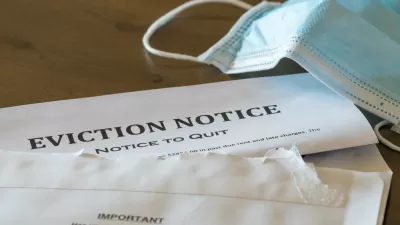The majority opinion claims the CDC overstepped its authority and calls for congressional approval of any further eviction moratoriums.

In a decision split between the Court's conservative and liberal justices, the Supreme Court "rejected the Biden administration’s latest moratorium on evictions, ending a political and legal dispute during a public health crisis in which the administration’s shifting positions had subjected it to criticism from adversaries and allies alike."
As reported by Adam Liptak and Glenn Thrush, "[t]he decision puts hundreds of thousands of tenants at risk of losing shelter, while the administration struggles to speed the flow of billions of dollars in federal funding to people who are behind in rent because of the coronavirus pandemic and its associated economic hardship."
The Court's decision stated that the Centers for Disease Control and Prevention (CDC) "had exceeded its authority" by using a "a decades-old statute that authorizes it to implement measures like fumigation and pest extermination" to impose a sweeping eviction moratorium. According to the majority opinion, "[i]f a federally imposed eviction moratorium is to continue, Congress must specifically authorize it."
A statement from the White House criticized the decision, saying "[a]s a result of this ruling, families will face the painful impact of evictions, and communities across the country will face greater risk of exposure to Covid-19." States such as New York and California have extended their own eviction moratoriums as they struggle to distribute the millions in rental assistance funds that remain stuck in bureaucratic limbo.
FULL STORY: Supreme Court Ends Biden’s Eviction Moratorium

Study: Maui’s Plan to Convert Vacation Rentals to Long-Term Housing Could Cause Nearly $1 Billion Economic Loss
The plan would reduce visitor accommodation by 25,% resulting in 1,900 jobs lost.

North Texas Transit Leaders Tout Benefits of TOD for Growing Region
At a summit focused on transit-oriented development, policymakers discussed how North Texas’ expanded light rail system can serve as a tool for economic growth.

Why Should We Subsidize Public Transportation?
Many public transit agencies face financial stress due to rising costs, declining fare revenue, and declining subsidies. Transit advocates must provide a strong business case for increasing public transit funding.

How to Make US Trains Faster
Changes to boarding platforms and a switch to electric trains could improve U.S. passenger rail service without the added cost of high-speed rail.

Columbia’s Revitalized ‘Loop’ Is a Hub for Local Entrepreneurs
A focus on small businesses is helping a commercial corridor in Columbia, Missouri thrive.

Invasive Insect Threatens Minnesota’s Ash Forests
The Emerald Ash Borer is a rapidly spreading invasive pest threatening Minnesota’s ash trees, and homeowners are encouraged to plant diverse replacement species, avoid moving ash firewood, and monitor for signs of infestation.
Urban Design for Planners 1: Software Tools
This six-course series explores essential urban design concepts using open source software and equips planners with the tools they need to participate fully in the urban design process.
Planning for Universal Design
Learn the tools for implementing Universal Design in planning regulations.
City of Santa Clarita
Ascent Environmental
Institute for Housing and Urban Development Studies (IHS)
City of Grandview
Harvard GSD Executive Education
Toledo-Lucas County Plan Commissions
Salt Lake City
NYU Wagner Graduate School of Public Service





























